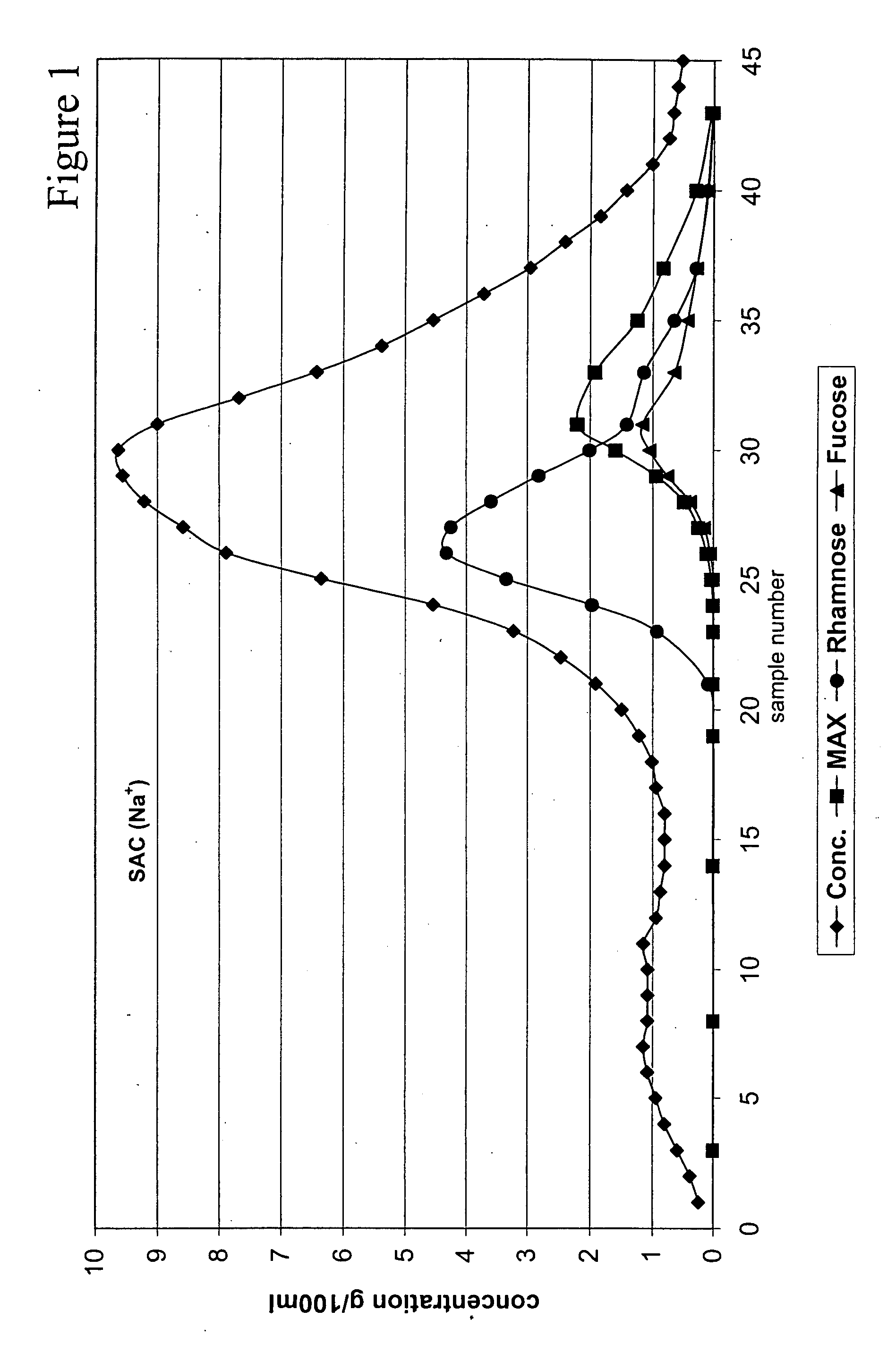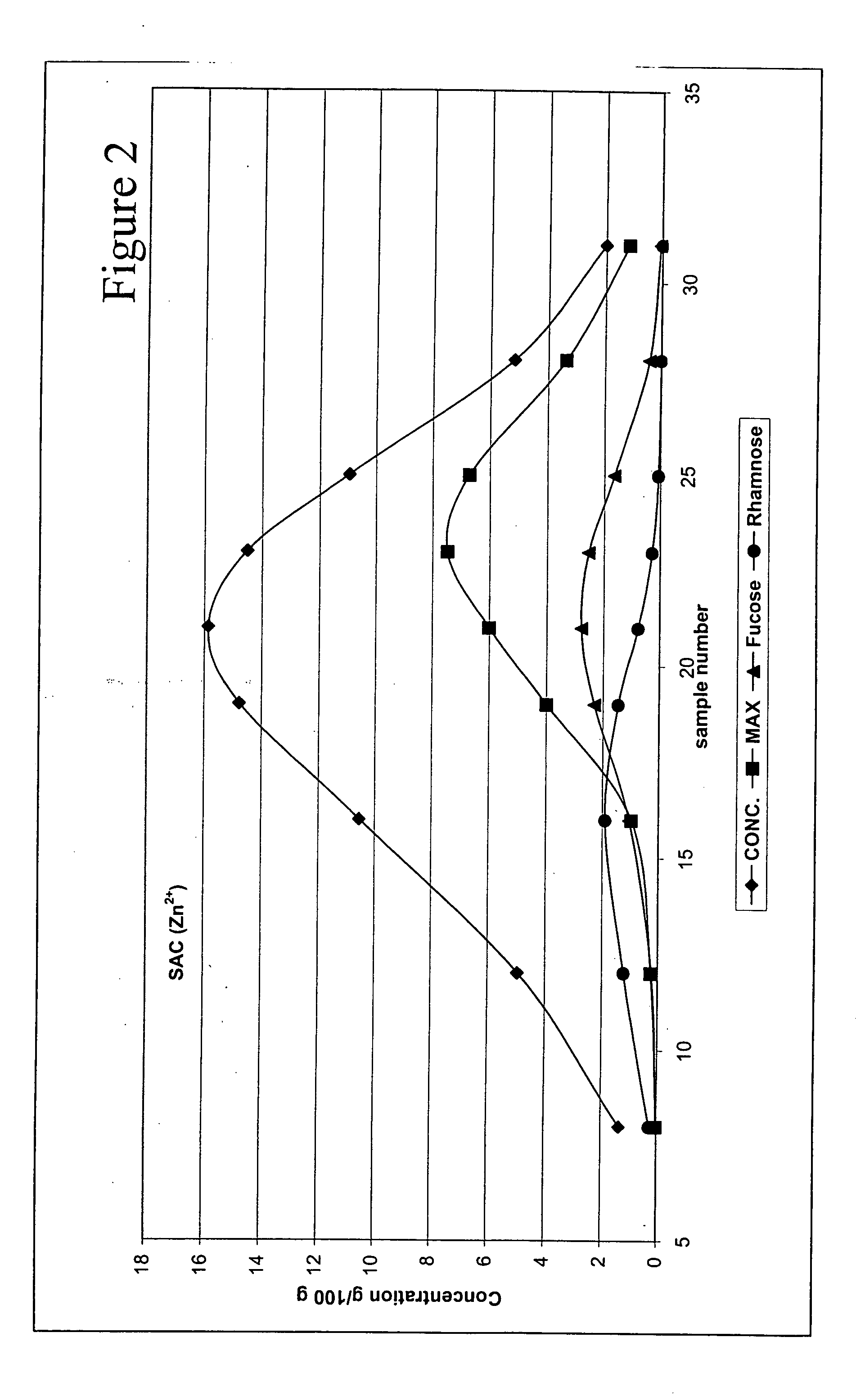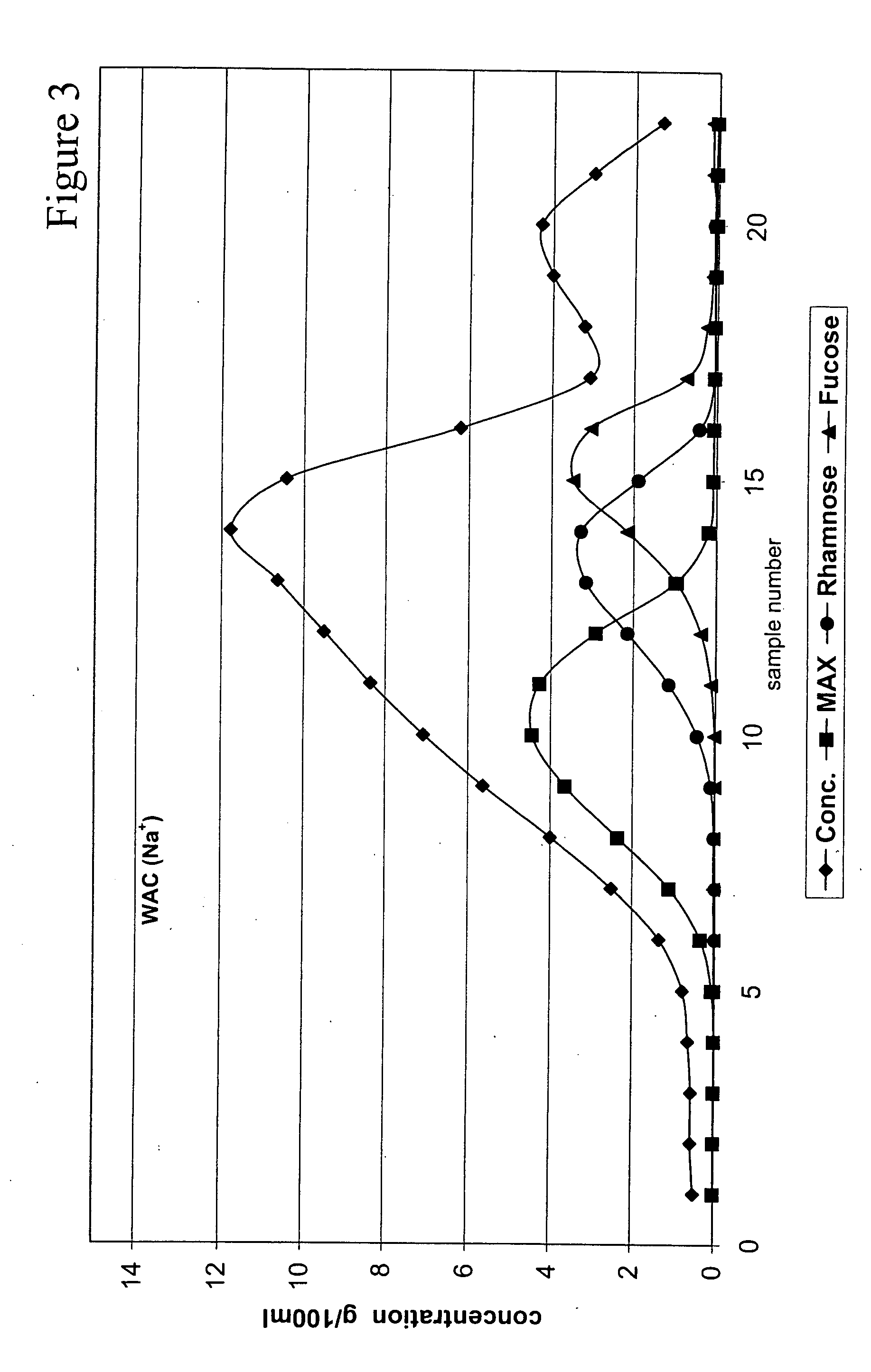Separation of sugars
a technology of sugar and separation technology, applied in the field of sugar separation technology, can solve the problems of not providing deoxy sugar, presenting a problem of sufficient purity of fucose, and high cost of direct extraction of brown algae, and achieve the effect of sufficient purity
- Summary
- Abstract
- Description
- Claims
- Application Information
AI Technical Summary
Benefits of technology
Problems solved by technology
Method used
Image
Examples
example 1
Chromatographic Fractionation of a Solution Containing Deoxy Sugars with a Strongly Acid Cation Exchange Resin in Na+ form
The solution containing deoxy sugars used as the feed for the chromatographic separation was a side stream separated from Ca2+ based sulfite spent liquor after the recovery of the main part of xylose (WO 02 / 27039; US publication No. 02 / 0120135). Birch had been used as raw material for the sulfite cooking. The feed solution had the following composition:
Composition of the feedDry solids, g / 100 ml42Fucose, % on RDS5.7Rhamnose, % on RDS23.2MAX, % on RDS13.0Others, % on RDS58.1
The chromatographic fractionation was performed in a pilot scale chromatographic separation column as a batch process. The column with a diameter of 1 m was filled with a strongly acid cation exchange resin having a styrene skeleton (Finex CS 0.11GC), manufactured by Finex Ltd. The resin was in Na+ form. The height of the resin bed was approximately 4.8 m. The DVB-content of the resin was...
example 2
Chromatographic Fractionation of a Solution Containing Deoxy Sugars with a Strongly Acid Cation Exchange Resin in Zn2+ form
The feed solution used for the chromatographic fractionation had been obtained from the rhamnose recovery process disclosed in WO 02 / 0120135 (US Publication No. 02 / 0120135). The feed solution had the following composition:
Composition of the feedDry solids, g / 100 g25Fucose, % on RDS13.0Rhamnose, % on RDS9.2MAX, % on RDS37.0Others, % on RDS70.8
The chromatographic fractionation was performed in a laboratory chromatographic separation column as a batch process. The column with a diameter of 0.09 m was filled with a strongly acid cation exchange resin having a styrene skeleton (Finex CS 11 GC), manufactured by Finex Ltd. The height of the resin bed was approximately 1.5 m. The DVB-content of the resin was 5.5 weight-% and the average particle size of the resin was 0.307 mm. The resin was regenerated into Zn2+-form. The temperature of the column and feed solutio...
example 3
Chromatographic Fractionation of a Solution Containing Deoxy Sugars with a Weakly Acid Cation Exchange Resin in Na+ form
The feed solution used for the chromatographic fractionation was a fraction containing fucose, MAX, rhamnose and other monosaccharides obtained in accordance with Example 1 (separation with SAC in Na+ form). The feed solution had the following composition:
Composition of the feedDry solids, g / 100 ml36.7Fucose, % on RDS12.6Rhamnose, % on RDS14.8MAX, % on RDS21.2Others, % on RDS51.4
The chromatographic fractionation was performed in a pilot scale chromatographic separation column as a batch process. The column with a diameter of 0.60 m was filled with a weakly acid cation exchange resin having an acrylic skeleton (Finex CS 16GC), manufactured by Finex Ltd. The resin was regenerated to Na+-form. The height of the resin bed was approximately 5.2 m. The DVB-content of the resin was 8 weight-% and the average particle size of the resin was 0.33 mm. The temperature of...
PUM
| Property | Measurement | Unit |
|---|---|---|
| Temperature | aaaaa | aaaaa |
| Fraction | aaaaa | aaaaa |
| Fraction | aaaaa | aaaaa |
Abstract
Description
Claims
Application Information
 Login to View More
Login to View More - R&D
- Intellectual Property
- Life Sciences
- Materials
- Tech Scout
- Unparalleled Data Quality
- Higher Quality Content
- 60% Fewer Hallucinations
Browse by: Latest US Patents, China's latest patents, Technical Efficacy Thesaurus, Application Domain, Technology Topic, Popular Technical Reports.
© 2025 PatSnap. All rights reserved.Legal|Privacy policy|Modern Slavery Act Transparency Statement|Sitemap|About US| Contact US: help@patsnap.com



